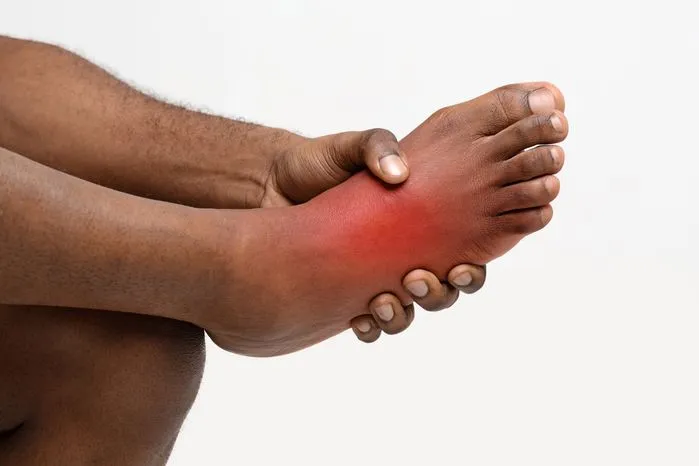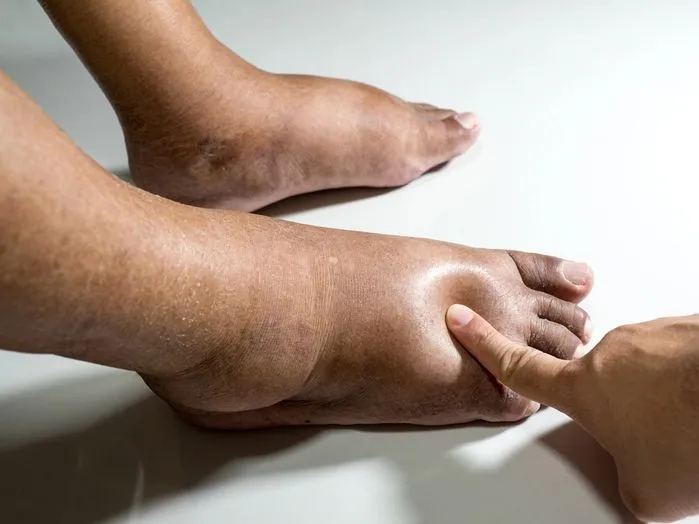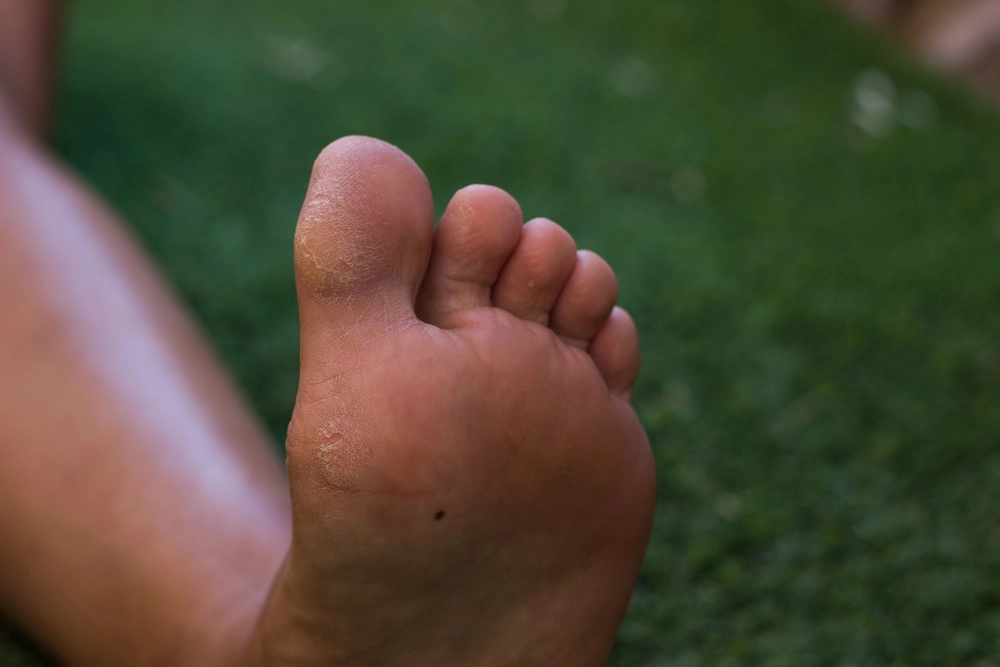
Unraveling Diabetic Neuropathy: A Closer Look at Its Causes and Mechanisms
When we first encountered diabetic neuropathy in clinical practice, we saw firsthand how this often-overlooked complication can drastically affect quality of life. Many patients assumed numbness, tingling, or burning sensations in their feet were just minor inconveniences—until mobility issues, chronic pain, and even wounds that wouldn’t heal made them realize something deeper was at play.
Diabetic neuropathy isn’t just a side effect of high blood sugar—it’s a complex, progressive condition with multiple underlying mechanisms that damage the nervous system over time. In this article, we’ll explore the precise biological processes behind diabetic neuropathy (pathophysiology) and what truly causes it (etiology)—not just in theory but through the lens of real-world cases and emerging research. By understanding these mechanisms, you’ll gain actionable insights into early detection, intervention strategies, and why standard blood sugar control may not be enough to prevent nerve damage. Let’s break it down.
Top 5 Takeaways: Key Insights on Diabetic Neuropathy
1️⃣ Neuropathy is common. Up to 70% of people with diabetes develop it—often unnoticed.
2️⃣ Pain isn’t the only sign. Numbness, tingling, and temperature changes can signal nerve damage.
3️⃣ Blood sugar control isn’t enough. Inflammation and oxidative stress also play a role.
4️⃣ Early detection matters. Regular foot checks and nerve screenings help prevent complications.
5️⃣ Prevention requires a full-body approach. Control blood sugar, reduce inflammation, and stay active.
👉 Take action today to protect your nerves!
The Link Between Diabetes and Nerve Damage
Diabetes and nerve damage are closely linked, though the connection might not be obvious at first. Insulin resistance often results from diabetes when cells fail to respond correctly to insulin. This leads to elevated blood sugar levels, which eventually harm nerves. You may wonder why such harm occurs. High glucose levels damage tiny blood vessels supplying nerves, depriving them of essential nutrients.
Remarkably, bodies possess a natural capacity for nerve regeneration. However, prolonged high glucose levels can impede this healing process. Therefore, maintaining blood sugar within normal ranges plays a vital role. Managing glucose helps protect nerves and allows healing to occur effectively.
Metabolic Factors Contributing to Neuropathy
Understanding the impact of diabetes on nerves is one part of the equation; metabolic factors contributing to neuropathy hold equal significance. Metabolic syndrome encompasses conditions like elevated blood pressure and abnormal cholesterol levels, increasing susceptibility to nerve damage. Insulin resistance, a core aspect of metabolic syndrome, plays a crucial role. When the body fails to respond adequately to insulin, blood sugar rises, leading to nerve harm over time. Managing insulin resistance by adopting a healthy lifestyle can reduce neuropathy risk. Consuming balanced meals, engaging in regular physical activity, and keeping track of personal health are practical measures to consider.
The Role of Microvascular Complications
Microvascular complications involve small blood vessel problems in individuals with diabetes, contributing to neuropathy. Elevated blood sugar can damage these tiny vessels, impacting their ability to supply adequate blood flow to nerves. This flow is essential for nerve health.
Inadequate blood flow can result in nerve damage or death over time, leading to neuropathy. Imagine a garden hose with a kink; insufficient water flow prevents plants from thriving. Similarly, nerves require consistent blood supply for optimal function. Managing blood sugar levels helps protect these vessels, reducing the risk of neuropathy.
Common Symptoms and Early Warning Signs
Feeling numb or experiencing a tingling sensation in your feet? Such sensations often signal diabetic neuropathy. Burning pain, particularly in feet and hands, is another symptom. Recognizing these signs early allows for timely intervention. Consider these indicators:
- Tingling and Numbness: Usually begins in toes and fingers, then spreads upward.
- Burning Pain: Intensifies at night, disrupting sleep.
- Muscle Weakness: Makes gripping objects or maintaining balance difficult.
These uncomfortable symptoms are important signals from your body. Understanding them aids in taking steps to address the condition early.
Strategies for Managing and Preventing Neuropathy
Adopting a proactive approach to managing and preventing neuropathy can significantly impact health outcomes. Begin with lifestyle changes such as regular exercise, which boosts blood circulation and keeps blood sugar levels in check. Engaging in enjoyable activities like walking or swimming makes it easier to maintain a consistent routine. Nutritional interventions also play a vital role. A balanced diet full of vitamins, minerals, and antioxidants supports nerve health. Foods like leafy greens, nuts, and whole grains, rich in essential nutrients, should be part of your meals. Close monitoring of blood sugar levels and following healthcare provider guidance are essential. By combining these methods, you can manage and lower the risk of neuropathy effectively.
"One of the biggest misconceptions we’ve seen in diabetic neuropathy is that pain is the primary warning sign—when in reality, losing sensation is often the most dangerous indicator of nerve damage. Patients like Mr. Rodriguez thought numbness was harmless, only to face life-changing consequences. The truth is, neuropathy isn’t just about blood sugar control; inflammation, oxidative stress, and metabolic dysfunction play equally critical roles. Addressing these factors early can mean the difference between long-term nerve health and irreversible complications."
Supporting Statistics: The Hidden Risks of Diabetic Neuropathy
1. Neuropathy Is More Common Than You Think
- 30%–70% of adults with diabetes develop diabetic peripheral neuropathy (DPN).
- Many cases go undiagnosed until serious complications arise (e.g., infections, amputations).
- Source: CDC
💡 Key Insight: Many assume neuropathy is rare or only affects those with uncontrolled diabetes. In reality, even well-managed cases can develop nerve damage.
2. Blood Sugar Isn’t the Only Factor—Inflammation & Oxidative Stress Matter
- Chronic inflammation and oxidative stress contribute to nerve damage, sometimes within just eight weeks of onset in experimental studies.
- Neuropathy isn’t just about glucose levels—it’s a metabolic condition that requires a broader approach.
- Source: NCBI
💡 Key Insight: I’ve worked with patients who had normal A1C levels but still developed neuropathy. Addressing inflammation early is critical.
3. Comprehensive Management Reduces Risk but Doesn’t Eliminate It
- The Diabetes Control and Complications Trial (DCCT) found that tight glucose control reduces neuropathy risk.
- However, neuropathy still developed in some cases, proving that blood sugar management alone isn’t enough.
- Source: CDC
💡 Key Insight: Many believe good blood sugar control prevents neuropathy. The truth? A holistic strategy—targeting inflammation, oxidative stress, and lifestyle factors—is essential.
What This Means for You
✔ Neuropathy is common—don’t ignore early signs.
✔ Nerve damage isn’t just about blood sugar—control inflammation, too.
✔ A holistic approach offers the best protection.
💡 Act Now: Routine screenings and proactive lifestyle changes can help prevent irreversible nerve damage. Start protecting your nerves today!
Final Thoughts: Why Neuropathy Prevention Needs a New Approach
Diabetic neuropathy isn’t just a complication—it’s a progressive, often silent condition that can lead to life-changing consequences. Many don’t realize:
- Pain isn’t the only warning sign. Numbness, tingling, or temperature changes can signal nerve damage.
- Neuropathy is more common than people think. Many cases go undiagnosed until severe.
- Blood sugar control alone won’t prevent it. Inflammation, oxidative stress, and metabolic dysfunction also contribute.
What Needs to Change?
💡 The traditional approach focuses too much on glucose control. Research and real-world cases show a better strategy includes:
✔ Inflammation management (diet, lifestyle, and targeted supplements).
✔ Routine nerve screenings—before symptoms worsen.
✔ Early intervention with nerve-protective strategies.
Prevention Starts Now
📌 Neuropathy isn’t inevitable. Proactive management can slow or prevent progression.
📌 The best outcomes happen with early action. Don’t wait for symptoms to worsen.
📌 A holistic approach is the best defense. Treat the root causes—not just blood sugar levels.
💡 Bottom Line: If you have diabetes, now is the time to start protecting your nerves. The earlier you act, the better your long-term health.
Frequently Asked Questions
Can you stop diabetic neuropathy?
Diabetic neuropathy cannot be completely stopped, but its progression can be slowed and symptoms managed through effective blood sugar control, healthy lifestyle choices, and medications. Keeping blood sugar levels within the target range is crucial to preventing further nerve damage. Additionally, maintaining a nutritious diet, exercising regularly, and avoiding smoking and excessive alcohol consumption can help manage the condition. Medications may be prescribed to alleviate pain and manage symptoms. Regular check-ups with a healthcare provider are also important to monitor the condition and adjust treatment as necessary.
What are the 5 main symptoms of diabetic neuropathy?
The five main symptoms of diabetic neuropathy are: numbness or reduced ability to feel pain or temperature changes, a feeling of tingling or burning in the hands or feet, sharp pain or cramps, increased sensitivity to touch, and loss of reflexes, especially in the ankles.
What is the first-line treatment for diabetic neuropathy?
Diabetic patients with neuropathy need first to treat high blood sugar levels because this slows down nerve damage progression. Patients can take either lifestyle improvements combined with medication or insulin therapy combined with prescribed oral drugs to treat their diabetic neuropathy. Symptoms of neuropathy may be treated with pain medications while antidepressants and anticonvulsants are alternative treatment options.
What are the worst foods for neuropathy?
Neuropathy patients should strictly avoid consuming sugary products, refined grains saturated, trans fats, and alcoholic beverages. Neuropathy symptoms can become more severe due to foods that cause inflammation and deteriorate blood sugar regulation and nerve health.
What brings down blood sugar immediately?
People affected by high blood sugar levels can reduce their symptoms through fiber-rich foods and water intake along with physical activities. A healthcare provider should monitor the use of insulin as medical treatment.


















